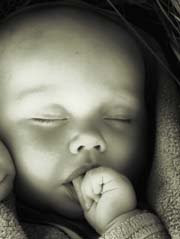Dental Treatments for Sleep Apnea
 There are many different ways to treat sleep apnea ranging from medicines, facial masks, and dental treatments. But before you can treat it, you must understand what sleep apnea is. The simple definition of sleep apnea is the disruption of breathing while you are asleep. The disorder affects the sleep of thousands of people each night and can become a very serious problem if gone untreated; it can even become life threatening. Generally, sleep apnea goes virtually undiagnosed as 90% of those who actually have the disorder do not even know it simply because they do not remember not being able to breathe in their sleep.
There are many different ways to treat sleep apnea ranging from medicines, facial masks, and dental treatments. But before you can treat it, you must understand what sleep apnea is. The simple definition of sleep apnea is the disruption of breathing while you are asleep. The disorder affects the sleep of thousands of people each night and can become a very serious problem if gone untreated; it can even become life threatening. Generally, sleep apnea goes virtually undiagnosed as 90% of those who actually have the disorder do not even know it simply because they do not remember not being able to breathe in their sleep.
There are many different symptoms associated with sleep apnea however the most frequent factor is the cessation of breathing during sleep. People suffering from sleep apnea also may choke or gasp during sleep to draw in breath, experience loud snoring, awake suddenly to restart breathing, sweat frequently through the night, experience headaches, sore throat, or dry mouth in the morning, and even may experience daytime sleepiness. It is important to know that snoring and sleep apnea are not one and the same. While snoring is a symptom of sleep apnea in some people, it is often not a sign of sleep apnea.
In many cases, the shape of a person’s head and neck may actually be a cause of sleep apnea. This happens because the airway is made smaller when a person lays down for sleep in a certain way. Other causes include but are not limited to large tonsils or adenoids, obesity, relaxation of the tongue and throat muscles, smoking, and exposure to secondhand smoke, nasal congestion, and a family history. If a person suffers from immune system abnormalities, severe heartburn, acid reflux, high blood pressure, hypothyroidism, acromegaly, vocal cord paralysis, post-polio syndrome, Marfan’s syndrome, Down syndrome, or amyloidosis, he or she may also develop sleep apnea.
Treatments for sleep apnea vary, but dentists actually play a large and important role in the treatment of sleep apnea. Dentists along with physicians, psychologists and respiratory therapists all work together to treat each sleep apnea patient. Each patient responds to different aspects of treatment a little differently than others, but some of the most common and affordable treatments include dental treatments. There are different dental appliances, lower jaw adjustment devices, and oral devices that can help treat sleep apnea and can effectively treat mild to moderate sleep apnea.
Many dental devices for treating sleep apnea are much like athletic mouth guards or appliances used for orthodontics and are made of acrylic, fitting inside the mouth. The two most common dental treatments for sleep apnea include the Tongue Retaining Device and the Mandibular Repositioning. These two devices help open your airway, and keep it open during sleep, by moving your lower jaw or tongue forward while you sleep. Often, the lower jaw and tongue move too far back thus blocking the flow of air during sleep.
While dental treatments and devices for sleep apnea can make a huge difference in treating mild to moderate cases, such treatment does have side effects. If you choose to get treated consult a dentist like sleep apnea dentist Dr. Thomas Hedge in Cincinnati.
By Thomas Hedge.



Comments